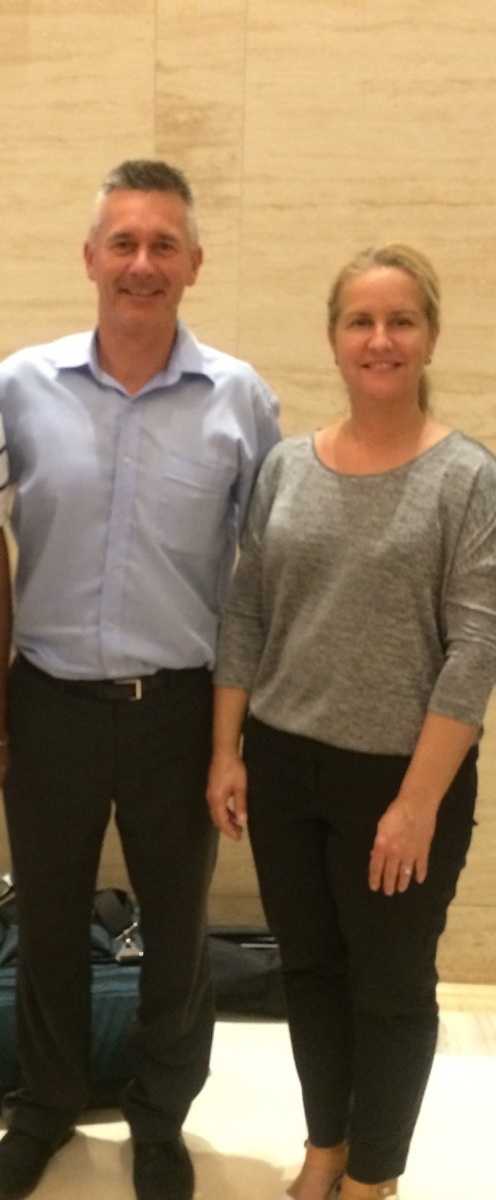Indervir Grewal
Tribune News Service
Chandigarh, December 23
Modern-day competitive sport is about small margins. Sometimes a fraction of a second can prove the difference between a gold and a bronze medal. Though a small margin, bridging that gap can be the hardest task for any top-level athlete; even harder is to identify the reason for that gap.
That is where sports sciences come in. In the last few decades, the level of sport has improved exponentially, mainly because of the advancements in the science and technology related to sport. In the top sporting nations, the ever evolving scientific techniques of training, with the help of modern technology, are being used to get the optimum out of each athlete. Most top teams or athletes take the help of exercise physiologists, biomechanics experts, sports psychologists and tacticians to get the edge over their competitors.
Damian Farrow, who is a professor of skill acquisition at Australian Institute of Sport (AIS), tells how he is helping a swimmer improve from a bronze to a gold medal.
“I am working with an Australian swimmer who is a medal prospect at next year’s Rio Olympics,” said Farrow, who also teaches at Victoria University’s College of Sport and Exercise Science/Institute of Sport, Exercise and Active Living (ISEAL). “Currently, he is the third fastest in the world. What separates him from the top two is a few seconds; it’s because he is a little slower on the turns. I am trying to figure out why that is and how to shave off those few seconds.”
Farrow and Dr Camilla Brockett, a senior fellow and senior sport consultant at ISEAL, were in Chandigarh recently to meet with the Punjab Sports Department officials. The Punjab government is looking to collaborate with Australia. This follows an MoU signed between the Australian and Indian governments to develop the skills of Indian students in various sports and fitness programs.
Even India has woken up to the need for sports scientists, but the use of these experts has been limited to the top level. “The main problem is that the experts that come here are attached only with the national teams or players,” said former India hockey captain Pargat Singh. “They don’t share their knowledge with the Indians. Their presence doesn’t help anyone at the lower levels. It is also a temporary situation because when they leave, we return to our old ways.”
First step the right one
While endurance and strength can be improved even in the later stages, certain aspects like coordination, balance, agility and reaction-time cannot be improved after a certain age. “We have to instil the right habits from the start; something as basic as throwing the ball in the most efficient way. Practising a drill a thousand times is useless if it’s done the wrong way,” said Farrow.
Brockett, who has a PhD in physiology, said: “In Australia, the mindset is changing. Even the cream of our sports scientists has started working at the developmental stage.”
Farrow added that the use of science and technology was to understand each athlete better and keep a close watch during his/her developmental stage.
“And it’s necessary to always keep questioning old ways and breaking new ground. When I first started working with swimmers, I couldn’t understand why, when they swam 100-plus laps during endurance training, they did the proper turns; because as the body tires some flaw is bound to creep in. Why not just do the laps without the technical turns? The coaches said it was how it had always been done.”
Farrow, who in his 30-year career has worked with athletes and coaches of different disciplines, said that the most important part of job was his relationship with the coaches.
“Every new technique is developed after testing in the labs and then on the field with the collaboration of the coaches. It’s a constant back and forth between us,” he said.
India far behind
While the top nations use empirical data at every stage in the growth of an athlete, most coaches in India still rely on old, obsolete methods. There are very few sports scientists in India; most of them are physiotherapists. In fact, almost all of the government-run centres don’t even have a physical trainer, forget about other experts. In India, the coach is expected to perform all the roles; but the fact is that even the level of the coaches is way below the international standard.
At India’s premier government institute, National Institute of Sports (NIS), the 10-month diploma course in coaching includes the introduction to all the branches of sports sciences. There is only a two-year post graduation course in sports medicine. There is a skill development program, which covers topics like sports nutrition, psychology and biomechanics, but these courses are just two to five weeks long.
There are various universities or medical colleges across India providing courses, but these are mainly in sports medicine or physiotherapy.
In comparison, Australia has over 30 universities, AIS being the leading institute, offering courses in sports sciences. On an average, the graduation is three-four years long, followed by the post-graduation, again three-four years long. There are over 150 sports scientists working, mostly with the government, in Australia currently. No wonder that Australia, a nation of only 24 million people, is amongst the top in the world, finishing in the top 10 at the last six Olympic Games.
Unlock Exclusive Insights with The Tribune Premium
Take your experience further with Premium access.
Thought-provoking Opinions, Expert Analysis, In-depth Insights and other Member Only Benefits
Already a Member? Sign In Now










